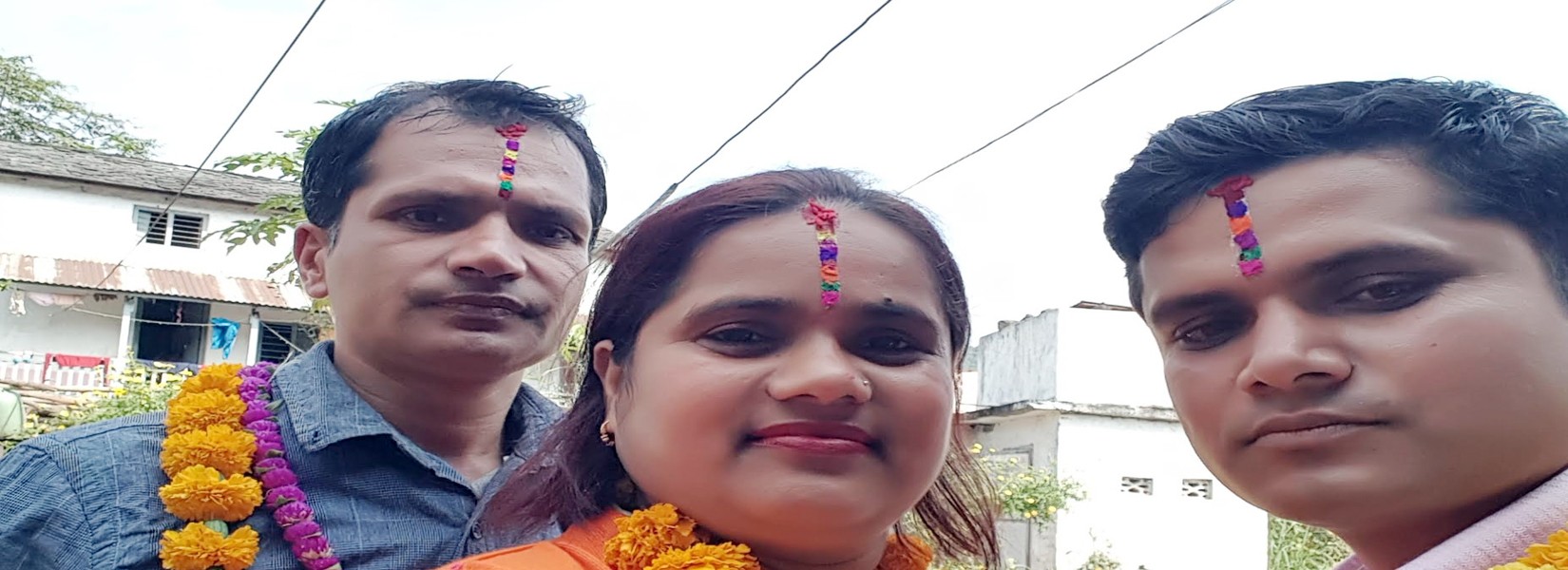Nepali New Year Day:
Frist day of Nepali month Baisakh (Middle of April). People put on new clothes, eat delicious food and wish prosperous life to each other.
Mother's day:
In April offer good to mothers and beg blessings. Person whose mothers have already died pay homage to them.
Buddha Jayanti:
Almost all people of Nepal especially the Buddhists they celebrates approximatelly April-May. Grand procession goes round the city with banners, slogan for perpetual peace, carrying Buddha's statue and picture on a chariot.
Asar Pandhra:
During last week of June, almost all people especially the farmers celebrates. Celebrated planting paddy, playing with mud and eating Dahi-chiura (yogurt and dried rice).
Rakchhya Bandhan:
It occurs full moon day August. Brahmins and Chhetris wear sacred cotton string especially made for that purpose. Other people celebrate eating Quanti (mixed food with different cereals).
Gai-Jatra:
From next day of RakchhyaBandhanup to Krishnastami, Mostly Newars celebrates every year. Decorated cows with Tayamacha dances are taken around the Pokhara and Kathmandu town praying eternal happiness to the departed souls of the family members.
Naag Panchami:
In July-Aug, espeically Hindu families celebrate. The sacred image of Naga (snakes) are stuck on the doors and worshipped with a belief that there would be no harm to family.
Krishna Janmasthami:
In August, Mostly Hindus and some other religious people, grand procession goes around the city acclaiming god Krishna and singing his songs, carry Krishna's images on a chariot.
Father's Day:
In August/September, almost all people of Nepal celebrates. Offer good food to father and get blessing. Persons whose fathers are already dead pay tribute to them.
Teej:
In September, mainly Hindu women, celebrates. Women wear new red saris and perform dances in groups publicly wishing and praying their husbands's long life.
Bada Dashain:
It occurs October. Dashain is the longest and most auspicious festival all the Hindus of the world in the Nepalese annual calendar, celebrated by Nepalese of all caste and creed. The fifteen days of celebration occurs during the bright lunar fortnight ending on the day of the full moon. Animal sacrifice to goddess Durga (Bhagavati) is the most prominent. Every yard of the temple of Durga can be seen offering blood of animals. Thorough out the Kingdom of Nepal the goddess Durga in all her manifestations.People get tika and blessing from their elder and eat meat and enjoy.
Kojagrat Purnima:
Full moon day October, almost all people come to celebrate. There occurs a great fair in Fewalake side. People enjoy different kinds of swings and watch boating competition.
Tihar:
October November continues for 5days occurs. All people celebrate. This festival goes on for three days. At the evening all houses are lighted with lamps and candle. People worship the goddess Laxmi for prosperity and wealth. They celebratMhapuja (especially Newar) and Bhaipuja.
Tamu Lhosar:
It occurs last week of December. Gurung (Tamu)people celebrate as the New year's day. There occurs a great fair in lakesides especially for the foreigners or tourists.
International New Year Day:
It occurs frist January. Everybody celebrate especially the youths and hotels in Lakeside. There occurs a great fair in Lake side especially for the foreigner.Gurung celebrate it with great enthusiasm and express best wishes to all. Conduct a grand procession which goes around Pokhara Bazaar.
Maghe Sanskranti:
It occurs frist day of the month of Magha. All people celebrate . People eat seasonal fruits especially yam, ghee and molasses. Khichadi (rice cooked with pulse and a little ghee) is the especial meal of that day.
Basanta (shree) Panchami:
Last week of Jan-first week February, Although a Hindu festival, almost all people celebrate. People visit the Saraswati temple (worship the goddess of wisdom) especially students worship for success in exam. From this day summer starts and spring ends: also called Basanta Panchami.
Shiva Ratri:
It occurs February-March. Hindus gather at shrine of Shiva and celebrate. In different communities, people make bonfire in the evening. In every shrine of Shiva, People offer puja to Lord Shiva.
Holi:
March Full-moon day occurs. All people except Muslims and Christians. This celebration is very colorful different kinds of colorful powder are blown in the air and also smeared on the faces singing holi songs.
Chaite Dashain:
Last week of March or First week April occurs. Only few Hindus especially Brahmins and Chhetris celebrate as their culture. Eat delicious food: Some people do sacrifice at the Bhagawati Temple as they do in Bada Dashain.
